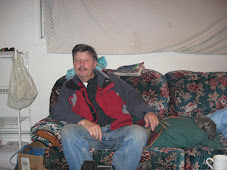D E C I S I O N
CLENDENING, J.
The Plaintiff, Julie (
(a) chronic pain and muscle spasms in her left upper chest area from the date of both incidents in October 1990 described above;
(b) difficulty of breathing on a daily basis affecting daily normal activities including, sleep, sports, and so on;
(c) breathing problems requiring her to attend to the Hospital Emergency on several occasions;
(d) pain, discomfort, confusion and other effects of anaesthesia, of oxygen treatment and of other drugs given to her;
(e) a permanent scar on the left side of her body;
(f) distrust and embarrassment for being the victim of remarks and interrogation from staff of the
(g) dependency on family members and mental anguish;
(h) loss of enjoyment of life;
(i) delays and inconvenience for her schooling.
To determine negligence in this case I must rely on the expert opinions offered to the Court. In approaching medical malpractice cases we must be vigilant to distinguish between that which is negligence and only a misadventure (see Roe v. Minister of Health et al, [1954] 2 All E.R. 131). A physician is not expected to guarantee results. A professional person will not be held liable for mere misadventure (see Crits and Crits v. Sylvester et al, 1 D.L.R. (2d) 502). Even Dr. Vair called this incident a misadventure.
I find that Dr. Fenzl explained the procedure, was not required to obtain a written consent, explained that Julie (Clark) Comeau might experience some pain from the insertion of the needle, properly swabbed the area with antiseptic, and she used the accepted technique of fine needle aspiration. Unfortunately the needle did puncture the Plaintiff’s left lung. The chance of puncturing the pleural cavity is extremely remote. Because of the anxiety experienced by women with breast lumps, and because of the remote chance of puncturing the pleural cavity during this procedure, I find Julie (
It was reported that in 1990 Julie (
The causation of the Plaintiff’s continuing chest pain has not been determined. In fact Dr. Beaudry testified that he is unclear as to whether it was caused by the fine needle aspiration or the insertion of the chest tube. The other experts assert that there was no problem with the insertion of the chest tube.
I find on a preponderance of evidence and on the testimony of the experts that the pneumothorax was caused by the fine needle aspiration. Based on the evidence of the experts, particularly that of Dr. Vair, I find that this was an error in judgment. It was inadvertent. It was a misadventure. It is impossible to determine if the Plaintiff’s ongoing problems are related to the fine needle aspiration, or some nerve fibre involvement at the site of the chest tube insertion. Either way, there was no evidence of negligence. The Plaintiff has failed to establish a causal connection between the chest pain she still suffers and the fine needle aspiration. Even if the requisite causal connection had been demonstrated, there was no negligence by Dr. Fenzl in the performance of this procedure. Doctors are not infallible, complications do arise.
I accept that the Plaintiff experiences chest discomfort and sometimes muscle spasms. Dr. Thompson, the pain management specialist, testified that Julie (
PROVISIONAL AWARD
If I had found negligence on the part of any of the doctors, I would have determined general damages in the vicinity of approximately $20,000 (see Jardine v. Jardine, 118 N.B.R. (2d) 147; Shaw v. Roy, 136 N.S.R. (2d) 1; and Scott v. Miller, 160 N.B.R. (2d) 50), and I would have allowed special damages for the hospital subrogation in the appropriate amount. To allow interest for 10 years would be excessive so I would allow it for a period of 5 years as I believe this case could have been heard much earlier. There was no proof offered to support damages for loss of homemaking capacity or for the cost of medications.
The Plaintiff’s claim is dismissed. In the circumstances, I order discretionary costs payable to the Defendants in the amount of $1,500.
DATED at
Judge Judy said:/?? The chance of puncturing the pleural cavity is extremely remote. Negligence.???
well is this not why there was a case.??? in the first place.???
Boys this is a good one ??? negligence on the part of any of the doctors Give the
doctors $1,500.00 dollars ? will my Abuser be Rewarded to.?? THE LAWYERS of MRDC. The Government gave them 27,million for a bump.?
will the Judge give there Lawyers $ 212,498.00 dollars to completely ruin me.
It not like this injustice ? IS= extremely remote. ! just look into canlii.org
http://canlii.org










1 comment:
You are an idiot! You really have no understanding of the procedure at all.
Post a Comment